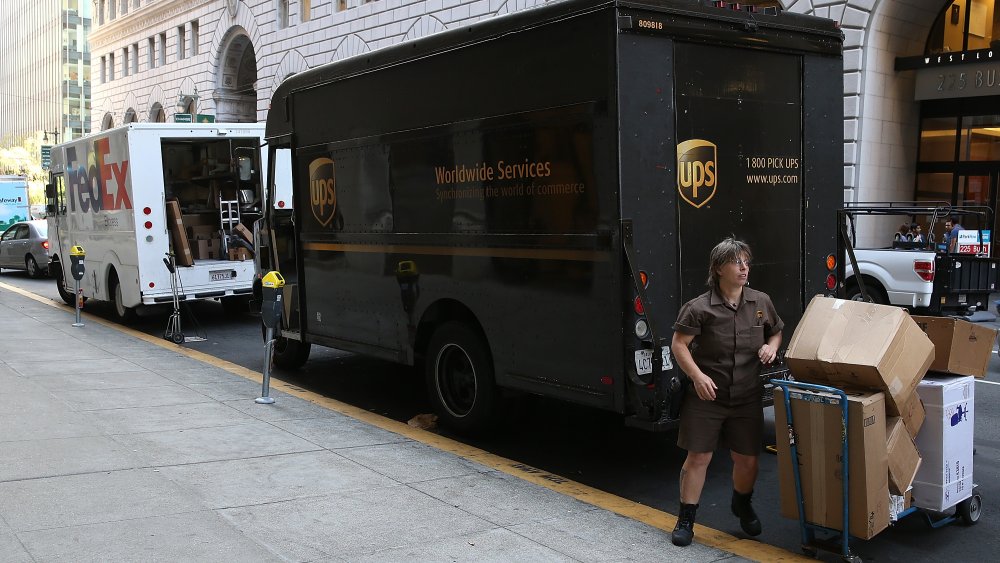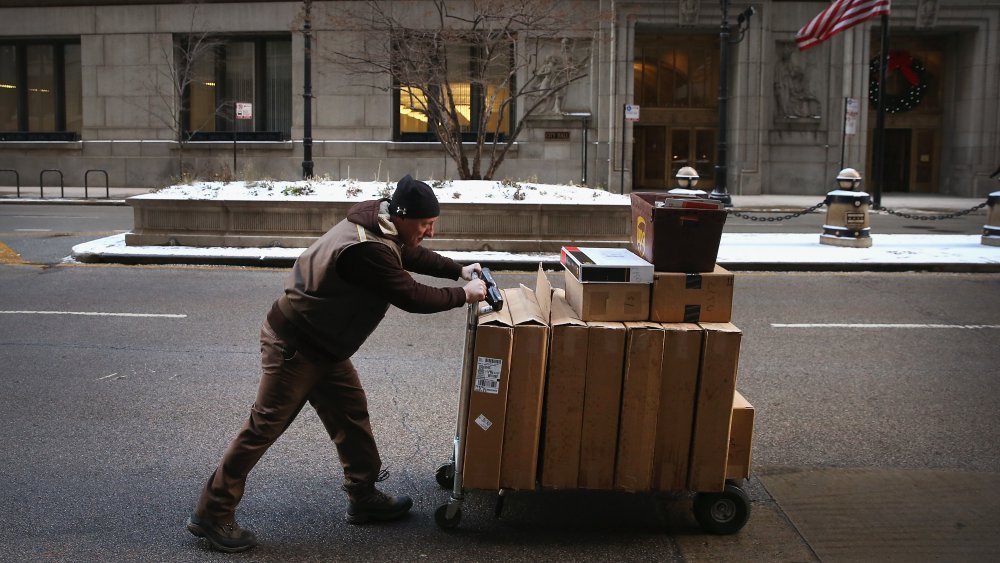The Worst Things About Being A UPS Driver
It didn't used to be United Parcel Service. UPS started out as the American Messenger Company, back in 1907, in Seattle, Washington. No brown uniforms or distinctive step vans. Deliveries were on foot or, for longer trips, bicycles. No word about whether the bikes were painted brown, either. UPS is considerably more than that these days — literally a global corporation, with its own airline and fleets of other vehicles. They'll deliver most anywhere, including the North Pole, using just about any means of transportation necessary (including drones); according to the company's website, UPS has "about 125,000 package cars, vans, tractors, (and) motorcycles" at its beck and call. The company boasts nearly a half-million employees, over 400,000 of whom work in the United States itself. Of those, it's a safe bet that the delivery staff are the individuals most of us encounter most of the time. And deliver they do — in 2019, 3.5 million packages and documents per day. No doubt the numbers are bigger this year — but that doesn't mean the job is any easier.
As Mental Floss explains, the work itself is physically demanding. The boot camp to which new hires are subjected includes practicing with boxes containing cinder blocks to simulate real deliveries. There's even a simulator to help them learn how to cope with walking in slippery conditions.
They frequently walk on slippery surfaces
Once in the field, drivers are under digital scrutiny at all times. Time is most assuredly money when you're talking about a UPS-sized scale of operations. You'll never see a UPS truck making a left turn across traffic, because it's faster for them to circle around to the right to get where they're going. During boot camp they learn how to start the vehicle with one hand while fastening their seat belt with the other, to save time. Sensors in their vehicles, and in their data pads, monitor every moment and every move of every day.
One driver complaint is weather: the vans lack air conditioning; heating that space, with constant in-and-out, is problematic. The trucks are cold in the winter and hot in the summer. The deliveries themselves are sometimes difficult — that slipping we mentioned earlier; aggressive dogs can also be a problem, though the company's tracking systems will offer information about sites with potentially problematic pooches. "What you do is jump on the hood of the nearest vehicle and don't move," one anonymous driver told Mental Floss.
It's a fair statement that more and more people are relying on deliveries from UPS these days. Want to make it easier on them? Meet them at the curb, or even half-way to the door. Shaving even a few seconds, let alone a minute or two, from their delivery time makes a huge difference on their performance record. Do you want that box or don't you?

